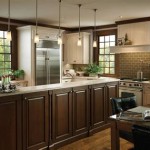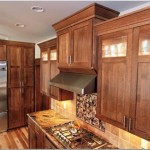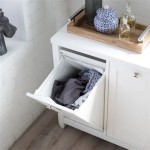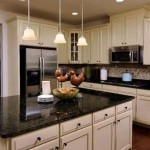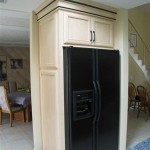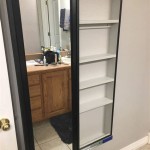Can You Paint Over Factory Painted Cabinets? A Comprehensive Guide
The question of whether factory-finished cabinets can be successfully painted over is a common one for homeowners considering a kitchen or bathroom renovation. Factory finishes, typically applied with sophisticated equipment and durable materials, present a unique set of challenges compared to surfaces prepped for painting in situ. Understanding these challenges and the proper techniques is crucial for achieving a professional and long-lasting result.
The feasibility of painting over factory-finished cabinets depends on several factors, including the type of factory finish used, the cabinet material, and the desired aesthetic outcome. Common factory finishes include conversion varnishes, lacquers, and thermo-foils, each possessing varying degrees of paint adhesion potential. Similarly, cabinet materials such as solid wood, MDF (Medium-Density Fiberboard), and laminate influence the preparation and painting process.
A successful paint job over factory-finished cabinets hinges on meticulous preparation, the selection of appropriate primers and paints, and adherence to proper application techniques. Skipping steps or using incompatible products can lead to peeling, chipping, and an overall unsatisfactory result, potentially negating any cost savings associated with painting rather than replacing cabinets.
Surface Preparation: The Foundation of a Lasting Finish
Proper surface preparation is arguably the most critical aspect of painting over factory-finished cabinets. Factory finishes are often very smooth and non-porous, which hinders paint adhesion. Therefore, the existing finish must be properly abraded to create a mechanical bond for the new paint layer.
The first step involves thoroughly cleaning the cabinet surfaces to remove any grease, grime, or contaminants. A degreasing detergent, such as trisodium phosphate (TSP) or a TSP substitute, is recommended. It is crucial to rinse the cabinets thoroughly after cleaning to ensure no detergent residue remains, as this can interfere with paint adhesion.
Following cleaning, the cabinets must be abraded. The specific grit of sandpaper required depends on the existing finish. For glossy finishes, a coarser grit, such as 120-grit, may be necessary to break the surface. Progressively finer grits, such as 180-grit and 220-grit, should then be used to smooth the surface and remove any deep scratches. Sanding should be performed evenly and consistently across all surfaces, paying particular attention to edges and corners.
After sanding, all sanding dust must be removed. A vacuum cleaner with a brush attachment is effective for removing loose dust. A tack cloth, a slightly sticky cloth designed to pick up fine dust particles, should then be used to ensure a completely clean surface. This step is critical, as any remaining dust can create imperfections in the final paint finish.
For cabinets with particularly slick or resilient factory finishes, a liquid deglosser can be used in addition to sanding. These products chemically etch the surface, further improving paint adhesion. It is essential to follow the manufacturer's instructions carefully when using a liquid deglosser, ensuring proper ventilation and protective gear.
Priming: Bridging the Gap Between Old and New
Priming is an essential step in painting over factory-finished cabinets. Primer serves as a bonding agent, creating a stable surface for the paint to adhere to. It also helps to block stains, prevent bleed-through from the existing finish, and ensure uniform color coverage.
The selection of the appropriate primer is crucial for a successful outcome. For factory-finished cabinets, an adhesion-promoting primer is highly recommended. These primers are specifically formulated to bond to slick, non-porous surfaces. They typically contain ingredients that create a chemical bond with the existing finish, providing a superior level of adhesion compared to general-purpose primers.
Epoxy primers are another option for challenging surfaces. They offer excellent adhesion and durability, making them suitable for cabinets that will be subjected to heavy use. However, epoxy primers can be more difficult to apply and may require specialized equipment.
The primer should be applied in thin, even coats, following the manufacturer's instructions. Multiple thin coats are preferable to a single thick coat, as this helps to prevent drips and runs. The primer should be allowed to dry completely before proceeding to the painting stage. Sanding the primed surface lightly with a fine-grit sandpaper (220-grit or higher) can further improve the final finish.
Consider the specific substrate of the cabinets when selecting a primer. If the cabinets are made of MDF, a primer designed for use on MDF is recommended. These primers help to seal the MDF and prevent it from absorbing moisture, which can cause swelling and warping.
Paint Selection and Application: Achieving a Professional Look
The choice of paint and the application technique significantly impact the final appearance and durability of the painted cabinets. High-quality paints specifically formulated for cabinets and trim are recommended.
Acrylic latex paints are a popular choice for cabinets due to their durability, ease of application, and low VOC (Volatile Organic Compound) content. Alkyd paints, also known as oil-based paints, offer superior hardness and resistance to chemicals, but they have higher VOC levels and require more effort to clean up. Hybrid paints, which combine the benefits of both acrylic and alkyd paints, are also available.
The sheen of the paint affects both the appearance and the durability of the cabinets. Semi-gloss or gloss sheens are generally recommended for cabinets as they are more durable and easier to clean than matte or eggshell sheens. However, higher sheens can also highlight imperfections in the surface, so proper surface preparation is even more crucial.
Paint can be applied using a brush, roller, or sprayer. Brushing and rolling are suitable for smaller projects and allow for greater control over the application. However, spraying can produce a smoother, more professional finish, especially on cabinets with intricate details. If using a sprayer, proper ventilation and safety precautions are essential.
Regardless of the application method, multiple thin coats of paint are preferable to a single thick coat. This helps to prevent drips, runs, and uneven coverage. Each coat should be allowed to dry completely before applying the next. Lightly sanding between coats with a fine-grit sandpaper (320-grit or higher) can further improve the smoothness of the final finish.
For optimal results, consider using a paint conditioner. Paint conditioners can help to improve the flow and leveling of the paint, reducing brushstrokes and producing a smoother finish. They are particularly useful when painting with alkyd paints, which tend to dry more quickly.
Finally, ensure proper curing time for the paint. Even though the paint may feel dry to the touch, it takes time for it to fully cure and reach its maximum hardness and durability. Avoid subjecting the cabinets to heavy use or cleaning them aggressively until the paint has fully cured, as this can damage the finish.
Successfully painting over factory-finished cabinets requires a thorough understanding of the challenges involved and a commitment to proper preparation, product selection, and application techniques. While not a task to be undertaken lightly, achieving a professional and long-lasting result is entirely possible with careful planning and execution.

The Right Way To Paint Your Kitchen Cabinets And Save Factory Finish Guaranteed Emily Henderson

Avoid These Mistakes How To Paint Cabinets That Are Already Painted Grace In My Space

How To Paint Kitchen Cabinets A Step By Guide Confessions Of Serial Do It Yourselfer

8 Tips For A Professional Looking Finish On Your Cabinets Cabinetdoors Com

Ask Maria Help My White Painted Kitchen Cabinets Look Bad Advice For Homeowners

How To Paint Kitchen Cabinets Without Sanding Or Priming

5 Tips For Painting Melamine Cabinets Real Milk Paint Co

The Most Durable Painted Cabinet Finish 12 Pros Weigh In Laurel Home

What You Need To Know Before Painting Cabinets The Palette Muse

Mimi Vanderhaven Cabinets With A Factory Finish That The Average
Related Posts

